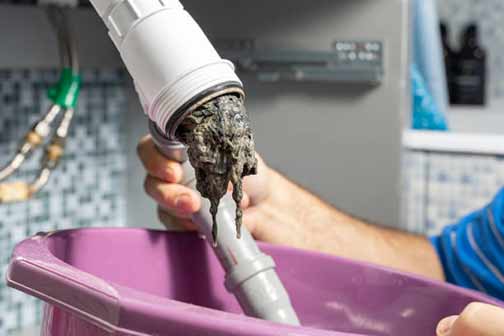
Why do clogs and blockages happen in your drainage system?
Drain clogs in your home happen for a lot of different reasons. Some of these are due to problems that are outside your control, says Sunnyside Management. For instance, your drains will clog more frequently if the pipes in the system are old. Clogs can also happen as a result of soil movements.
That being said, human error and abuse are the two biggest factors in the performance and longevity of your home’s drainage system. More drain clogs happen as a result of the habits of the people who live in the home than from any other cause.
You may already know that allowing food waste, grease, and small toys to get into your drains increases the risk of drain clogs in your home. But are you aware of the more unusual causes of clogs in your drainage system?
It is vital that you fully understand the various things that can cause clogs inside your drainage system. This information greatly enhances the effectiveness of any measures you take to prevent drain clogs in your home.
Here are some of the unusual things that can cause the drains in your home to clog:
Vegetable peels and stringy veggies
Because they are biodegradable, it might feel like it is alright to let things like carrots, potatoes, and vegetable peels into your drains. However, these organic materials take time to decompose and often cause blockages inside the pipes. Stringy vegetables like celery will also cause clogs inside your drains.
Grease and coffee grounds
If allowed to enter the system, coffee grounds can pose a serious threat to the function of your drainpipes. However, the damaging effect of coffee grounds is greatly amplified when it combines with grease to form a thick, sticky, hard-to-clean substance inside your drains.
Eggshells
Eggshells are another seemingly harmless material that can harm your drains. Dumping eggshells into your drains increases the risk of drain clogs. They have a membrane that can bind to pipes and trap debris. When it disintegrates, eggshells form a fine powder that lines the bottom of drainpipes.
Paper goods
Paper products – wipes, towels, and tissue – are unlikely culprits when looking for the causes of drain clogs in your home. But instead of disintegrating, these products accumulate to cause clogs inside your pipes. Excessive use of toilet paper and dumping so-called flushable items into the toilet will cause your drains to clog.
Cat litter
Flushing cat litter into the toilet is a major cause of drain clogs. Once inside the drainage system, cat litter clumps together to form a large mass. It also sticks to the sides of your drainpipes. Most importantly, cat litter will absorb water until it swells several times its original size, thereby blocking the drain line.
Soap scum
Soap scum is a familiar problem in regions with hard water. When hard water mixes with soap – particularly bar soap – it forms a sticky off-white residue called scum. Scum will stick to the walls of bathrooms and build up inside the drainage system. This residue slows the flow of water, encouraging buildup inside your drains.
Hair and soap mixture
It is a well-known fact that human and pet hair will cause problems inside your drainage pipes. A lesser-known fact is the impact of soap when it mixes with hair. Along with soap scum, bath oils, and natural body oils, hair can form a solid mass that interferes with the flow of water inside your drainpipes.
Mineral deposits
Calcium and magnesium deposits from hard water also cause clogs in your drains. As they build up, these deposits narrow the diameter of your drainpipes. They also create a rough surface that encourages debris to settle inside the pipes. By slowing water flow through the pipes, mineral deposits accelerate the buildup.

What can you do to prevent these problems in your home?
Educate your household
Your problem is half-solved if everyone in your home understands what they can and cannot do to the drainage system. This step alone can solve almost all of your home’s drainage problems.
Take preventive steps
These can include steps like installing strainers on drain openings to keep hair, soap scum, and debris out of the drainpipes. It also includes periodic DIY drain cleaning, such as pouring hot water into a drain weekly to remove debris.
Clean the drains on a schedule
Professional drain cleaning done once every year helps to get rid of debris that has accumulated in hard-to-reach areas of the drainage system. This step should be done whether you have a drain clog or not.
Finally, it is a good practice to have your drainage system camera inspected by a professional plumber once a year. A comprehensive inspection will give you a detailed overview of the condition of your drainpipes. It will also uncover any hidden problems in the system.

